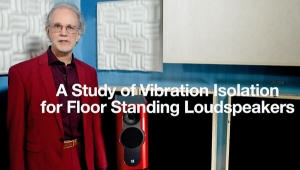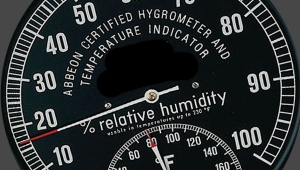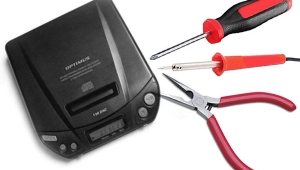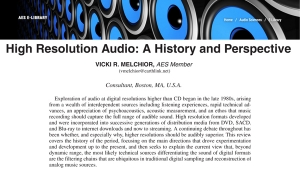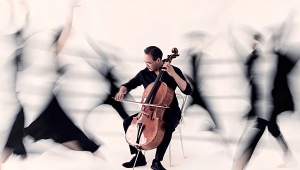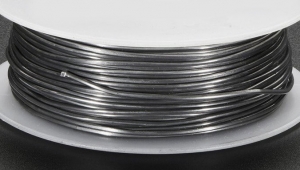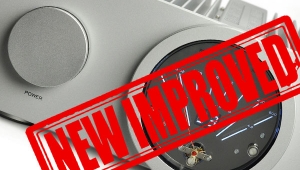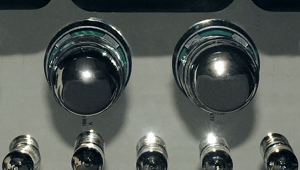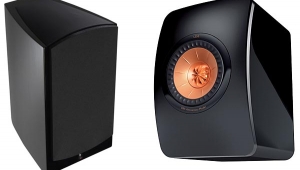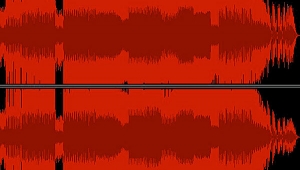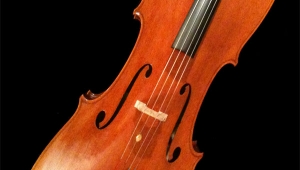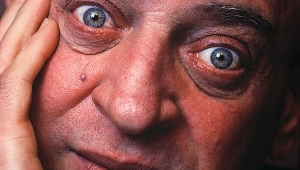| Columns Retired Columns & Blogs |
Scientists vs Audiophiles 1999 Reisch Replies part 2
Compared to the world of audio, however, physicists get along famously.. Despite joking and rivalry, there's a sense of community—a shared feeling that the two camps are contributing to a common goal. Why is it so different in audio? What have physicists learned that audiophiles and pro audio engineers haven't?
For one thing, physicists know that the greatest hits of physics—from Copernicus, Galileo, Newton, Einstein, and others—involved just the right blend of theoretical speculation and empirical observation. The 17th-century physicist Galileo is a good example. Besides making some profound discoveries, he wrestled with critics who dismissed him as casually as audio engineers dismiss audiophiles.
The story begins in 1609, when Galileo caught wind of an amazing new invention by the Dutch lens grinder, Hans Lipperhey—the telescope. Galileo immediately made his own and pointed it at the stars and planets. With "incredible delight," he wrote, he saw things that would settle the controversy between geocentrism and heliocentrism. Were the ancients right that the earth was in the center of the world, or was it the sun?
On the moon, for example, he saw shadows from valleys and mountains. The moon was no smooth, pearly sphere, as astronomers believed. And the milky way wasn't milky, either. Galileo saw a wash of tiny, faint stars that are too close together for the naked eye to distinguish. Through the telescope, nothing appeared as it should.
Then he noticed four small stars near Jupiter that strangely changed places night after night—Jupiter had moons. That nearly cinched it. Orthodoxy held that all celestial bodies revolved around the center of the universe, where the earth remained motionless. But these "new stars," as Galileo thought of them, clearly did not. If they could orbit Jupiter, why couldn't the earth orbit the sun, as Copernicus proposed?
The crowning evidence was Venus. With his telescope, Galileo could barely see that it went through a full cycle of phases. Sometimes it was only barely illuminated, like a crescent moon. At other times, it was nearly full. But, since geocentric models traditionally positioned Venus below the sun, more or less between the sun and the earth, Venus should never appear full. Convinced that Copernicus was right, Galileo spend the last part of his life defending heliocentrism and getting into all kinds of trouble. Eventually, he was placed under house arrest by the Inquisition for his refusal to recant his Copernican beliefs.
At one point, Galileo was in an audiophile's shoes. Here he was, claiming that his senses, aided by this new device, revealed startling features of the heavens that orthodox theories said should not—and could not—exist. Sound familiar?
Many distrusted Galileo's new device. Given the quality of glass and lens-grinding at the time, and problems such as condensation on the lenses, you can't blame them. You had to know how to use the telescope effectively. But others flat-out dismissed Galileo's observations. One scientific authority in Pisa, Giulio Libri, refused even to look through the device when Galileo presented it to him. His beliefs about the "true" nature of the heavens convinced him that Galileo must simply be imagining things. To Libri, Galileo was a phony "golden eye" astronomer who claimed to see things that, of course, weren't really there.
Libri and others may have been stubborn, but they weren't stupid. Besides a host of astronomical reasons for believing that geocentrism was true, ordinary common sense says that the earth can't be spinning like a top (how would anything stay put on its surface?) or careening around the sun at unbelievable speeds. The ground beneath us simply doesn't seem to be hurtling through space.
Had I lived in 17th-century Florence, I'm not sure whose side I would have taken. And that's just the point. Discoveries usually emerge from a vexing clash of theoretical beliefs and surprising observations. Until the dust has settled, it's hard to know who's right. All the reasons in the world made Galileo seem like a fool, but his observations were revolutionary.
Sometimes it's the other way around. At first, all the observations in the world seemed to proved that Einstein's bizarre theories of curved space and time distortion were sheer fantasy, but they weren't. Whether advances come from the top down, beginning with theoretical speculation, or from the bottom up, with new observations, there is always a meeting in the middle. Experimentalists and theorists need each other, and they know it. So did Raphael. In his painting, Aristotle and Plato are at least talking to each other.
But there's not much camaraderie in the world of audio. Too often, audio engineers (who uphold theories about what things should sound like) and audiophiles (who care mostly about what things do sound like) don't even acknowledge the other's point of view. By publishing both subjective and objective reviews of equipment, Stereophile is a beacon of hope for rapprochement. I'm biased, but it's true.
Pro audio magazines should follow suit. Ethan Winer's "Dispelling Popular Audio Myths," in a recent issue of Audio Media (April 1999, p.95), ought to appear in the dictionary next to "myopic." He writes, "Myth: Using audiophile speaker cables improves the sound, compared to an equally heavy gauge of normal electrical wire." Never mind that "normal electrical wire" and "audiophile speaker cables" are never defined. Winer focuses on damping factors, impedance, and capacitance, but writes not one word about listening to or comparing cables. Hello? This alleged myth is about sound—an empirical phenomenon. Winer assumes he can refute it exclusively on the basis of electrical theory.
Even if audiophiles were from Mars and pro engineers from Venus, you couldn't tell from Winer's column that we all live in the same solar system.
- Log in or register to post comments
